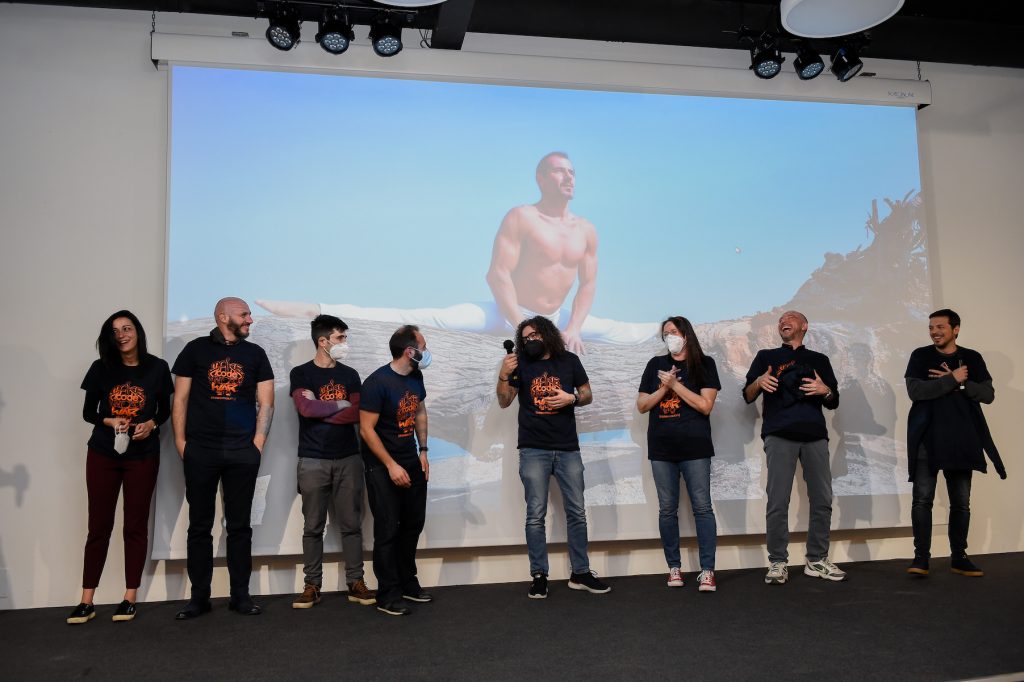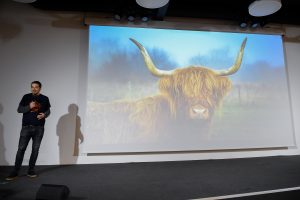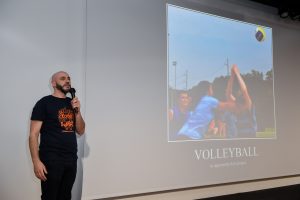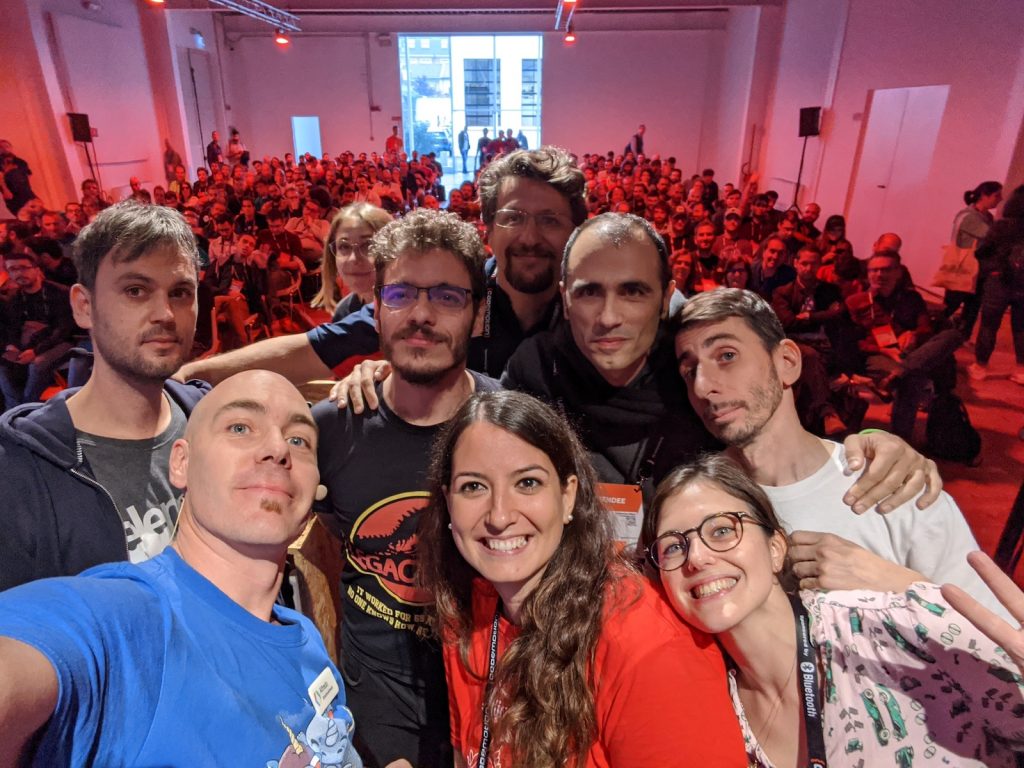A Slide Roulette is, at its core, a way to challenge conference speakers on their public speaking and improvisation skills, adding a lot of fun. For them and for the audience. Let’s see how to organize one of them.
Slide Roulette basic structure
At it’s core, the Slide Roulette is an improvisation activity where two teams compete on a game structured as follow:
- A team of two people goes on stage, ready to present a session, but with no knowledge of the session topic and slides.
- The first speaker is decided.
- The topic of the session is revealed to them, along with the first slide in the deck.
- The first speaker has about 1 minute to talk about the proposed topic, “taking inspiration” from the slide in some way
- Once the first speaker ends their presentation, the ball moves to the second speaker
- A new slide is shown
- The second speaker should continue to build on the topic, following the direction of the first speaker, and “taking inspiration” by the new slide
- The exchange continues, and after 6 slides in total, the session ends.
- Then, the other team goes on stage and does the same, with a new topic and a new deck.
- Once both teams finish their performance, the audience can vote and the winner is decided by measuring the intensity of the applause.
This structure can be replicated following a pyramidal elimination structure. For example, four teams at the baseline, split into two groups. The winners of each group will compete, to become the final winner.
As per every improvisation game, rules should be read as guidelines. So, creativity and deviation from this format is more than welcome, in particular to better adapt to the specific conference context.
The following sections contain the reasons for these choices, but it’s really up to the Slide Roulette organizer to “fine tune” the activity.
Create the teams
This is where the conference organizers help is needed the most. It’s important to identify, together with them, a group of speakers that feel comfortable in being challenged and pushed slightly away from their comfort zone. This attitude is more important than having great public speaking skills.
Then, create teams of two speakers each. Having two people on the stage at the same time brings more energy, creates a variety that keeps the audience more engaged, and if a speaker get stuck, the other becomes their safety net.
8 speakers is a good compromise to cover 45/50 mins of time, considering the Slide Roulette introduction and the conclusion segments too. They will form 4 groups, and have 6 matches.

Define talk topics
Define talk topics choosing something that is related to the conference main themes, and in the speakers’ domain of expertise. Leaving some space for creativity.
Familiarity with the selected topics facilitates speakers in finding connections between what they’ll say and the slides, offering a common background that keeps the audience engaged. A topic that has some sort of conflict at its core, of it’s known for being a challenging situation, generally creates space for a lot of fun, and even some jokes.
Avoid too technical topics. For example, if a conference is about frontend development, I would go on something along the lines of “When the team disagrees with the frontend framework choice“, or “The migration of legacy code“, but I would avoid topics like “Management of error conditions in React“, or “How to organize your resources in Angular“. The risk is to “improvise” another conference session. But this is a Slide Roulette, right?
Alternatively, topics can refer to the working life of the speaker/audience. Still with a tech conference in mind, some examples could be like “How to be successful during your job interview”, “Hiring a great candidate for your team“, “Manage conflicts between client needs and product priorities“, “The first stand-up meeting of a newly formed team“, etc.
Build the slide decks
In theory, every kind of image can be used to build a deck. There are services that return random images, they can all be around the same topic, or a mix of everything. Some useful suggestions to choose the images:
- Avoid text in slides, because it consumes time to be read, and tends to distract the speaker.
- Avoid slides that are related to the topics, as they could bring “back to reality” the discussion. For example, if the topic is “How to coordinate a successful customer meeting”, avoid slides with people in a meeting room and similar.
- Put a generic “inspirational” slide at the end of the deck, so it’s easier for the last speaker to wrap-up and close with a final message.
Counting 1 minute per slide allows the speaker to build a micro-story for each slide, without forcing into too many (potentially boring) details. Considering two speakers per team, giving to each one 3 opportunities seems fair enough, for a total of 6 slides.




The role of the presenter in a Slide Roulette
As for every show, the presenter is the person introducing the activity, the people, and keeping the rhythm of the show. Two additional important roles of the presenter are to keep the audience energized between the talks (it could happen that not all of them are an explosion of fun), and to help a speaker when is stuck, moving to the next slide and passing the ball to the other speaker.
The presenter can also be the judge in measuring audience level of applause, or delegate the task to a jury, generally composed by the conference organizers. And to take a selfie at the end of the activity!

Warming up the speakers
Hidden from the audience, but crucially important, is to spend some time (60 to no less that 30 mins) in warming up the speakers with some games. This is a common practice of improvisation, and every sport in general. There are millions of games that could be played to activate the positive and lateral-thinking mind, and to foster connection and collaboration among speakers, so it will be more natural for them to support each other while on stage. Here there are some good ones to use, especially from the “Yes And Exercises” section.
Have fun with Slide Roulette. If you have suggestions to improve the format, please let me know.